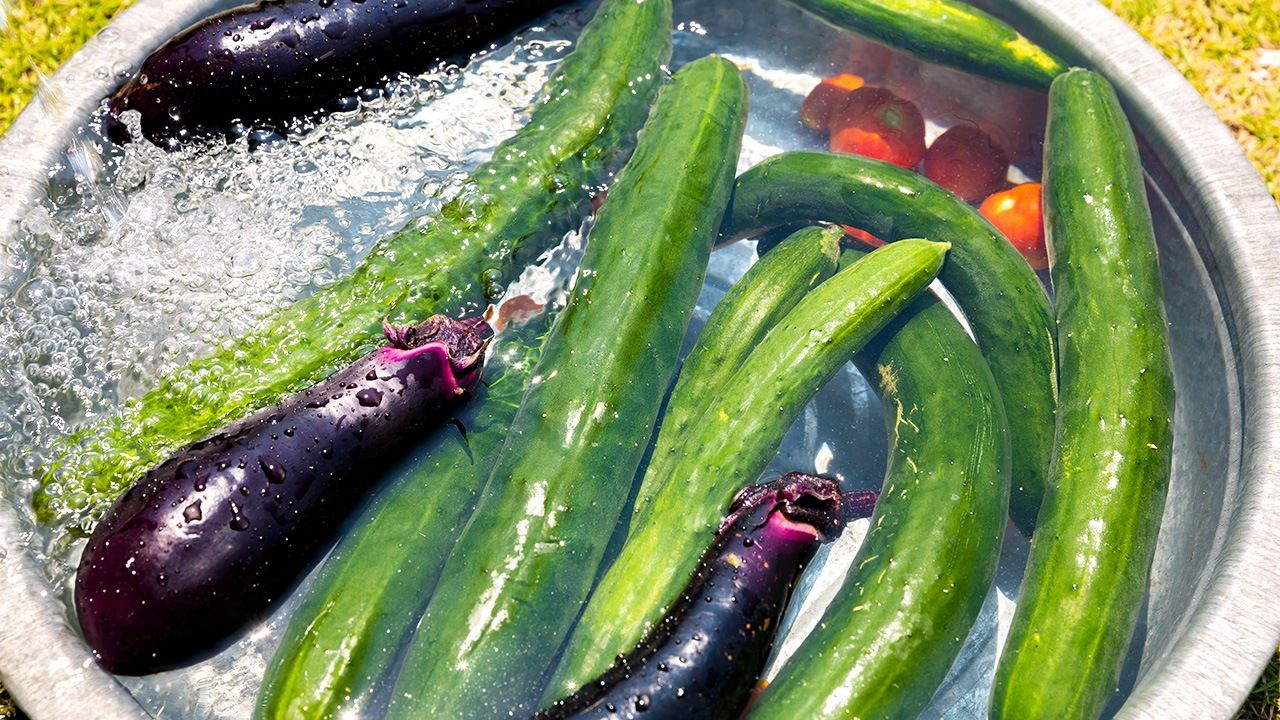
A Journey Through Japanese Haiku
Bucket Buddies
Culture Environment Lifestyle- English
- 日本語
- 简体字
- 繁體字
- Français
- Español
- العربية
- Русский
水桶にうなづきあふや瓜茄子 蕪村
Mizuoke ni / unazuki au ya / uri nasubi
In the bucket,
nodding to each other—
the melon and eggplant(Poem by Buson, written around 1745–46.)
Floating in a wooden bucket, a melon and eggplant look like they are nodding to each other. The melon is likely the gently sweet variety known as makuwauri. At the time of writing, eggplants were sometimes eaten raw, and the one in the haiku is likely being cooled in preparation. The vibrant colors of the seasonal foods convey a sense of coolness, but this is not a shasei (sketch from life) haiku, a style associated with the much later poet Masaoka Shiki (1867–1902).
Buson’s preface to the haiku states that, “Although I met the priest Seihan for the first time, we talked like old friends.” Thus, the melon and eggplant in the poem represent the two men nodding to each other as they chatter enthusiastically. Buson’s head was shaved at the time, like the priest’s, and this roundness makes for a whimsical comparison, brimming with humor. Seihan was also known by the name Unri, and there may have been a play on words here with uri (melon). Buson might also have been surprised how well he got on with Seihan, who was 23 years his senior and followed a different school of haiku.
Bashō wrote a haiku about the same foods: Aki suzushi / tegoto ni muke ya / uri nasubi (Autumn cool, / each of us peeling— / melons and eggplants). His disciple Kikaku also took on the topic in a poem with the title “Hōnen,” meaning “a year with a good harvest”: Nukamiso ni / toshi o kataran / uri nasubi (Tell the nukamiso / it’s been a bumper harvest— / melons and eggplants)—nukamiso is a rice bran paste used for pickling. With his respected forebears in mind, Buson boosted the comic element, while showing his esteem for the older poet he had just met.
(Originally published in Japanese. Banner photo © Pixta.)